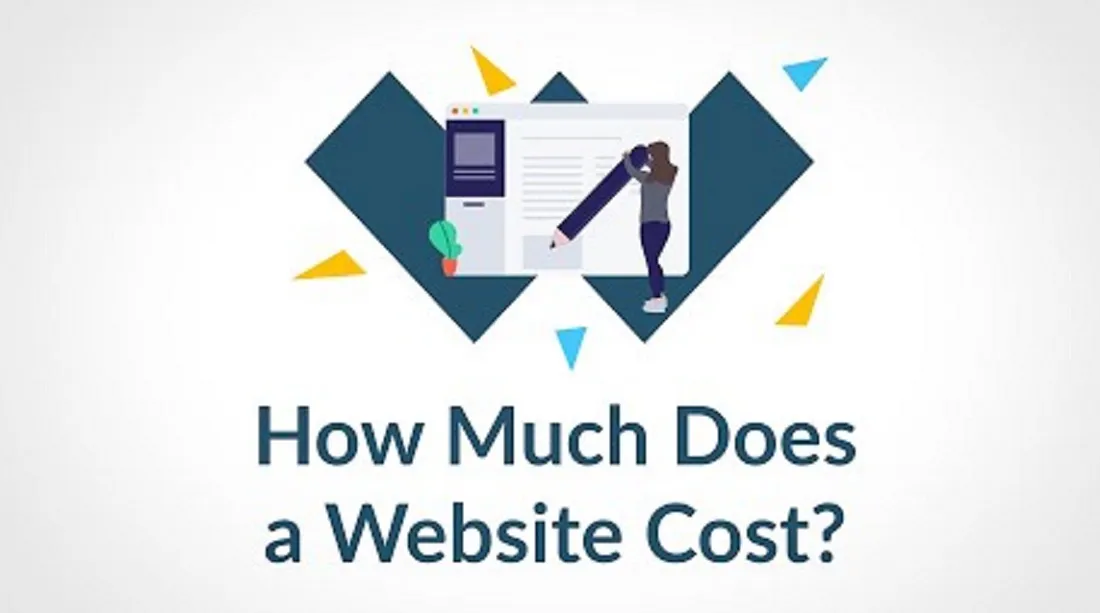Table of Contents
Average Cost of Website Design for Small Business in the USA
Starting a blog for your small business in the USA is a great way to establish your online presence, showcase your expertise, and engage with your target audience. Before delving into the exciting blogging world, it’s essential to consider the average costs associated with website design. These costs can vary widely depending on the scope and complexity of your project. Here is a detailed guide to help you understand the potential expenses:
The cost of a business website in the US can vary widely, depending on several factors, including:
- The size and complexity of the website
- The features and functionality required
- The level of customization
- The expertise of the web developer or design agency
- The type of website builder used
Generally, a basic business website with a few pages and simple features can cost anywhere from $2,000 to $5,000. A more complex website with more pages, features, and customization could cost $10,000.
Here is a breakdown of the typical costs involved in building a business website:
Domain name:
A domain name is the address of your website on the internet. It typically costs around $10 to $20 per year.
A domain name is a unique address that identifies a website online. It is what people type into their web browser to access your website. For example, the domain name for Google is “google.com”.
The domain name consists of two parts: the domain name and the top-level domain (TLD). The domain name is the part that is specific to your website, such as “google” in “google.com”. The TLD is the part that indicates the type of website, such as “.com” in “google.com”.
There are many different TLDs available; some of the most common are:
- .com: This is the most common TLD and is used for commercial websites.
- .net: This TLD is used for networking and internet-related websites.
- .org: This TLD is used for non-profit organizations.
- .edu: This TLD is used for educational institutions.
- .gov: This TLD is used for government websites.
When choosing a domain name, it is essential to choose one that is relevant to your business and easy to remember. It would help if you also tried to avoid choosing a domain name that is already taken.
You can register a domain name through a domain registrar. There are many different domain registrars available; some of the most popular are:
- GoDaddy
- Namecheap
- Google Domains
- IONOS
- Dynadot
The cost of registering a domain name varies depending on the domain registrar and the TLD. In general, registering a domain name costs around $10 to $20 per year.
Once you have registered a domain name, you must point it to your web hosting provider. Your web hosting provider will provide the necessary instructions for this.
Web hosting:
Web hosting is the service that stores your website’s files and makes them accessible to visitors. It typically costs around $5 to $10 per month.
Web hosting is a service that stores your website’s files and makes them accessible to visitors. When you sign up for a web hosting service, you rent space on a physical server to store all the files and data necessary for your website to work correctly.
Many types of web hosting are available, each with its advantages and disadvantages. Some of the most common types of web hosting are:
- Shared hosting: This is the most basic type of web hosting and is the most affordable. Your website will share a server with others, so your resources will be shared. This can lead to slower performance if your website gets a lot of traffic.
- Dedicated hosting: This web hosting gives you your dedicated server, meaning you will have all the resources. This is the most expensive type of web hosting, but it is also the most reliable.
- VPS hosting: This web hosting is a middle ground between shared hosting and dedicated hosting. You will share a server with other websites but have more resources than you would with shared hosting. This is a good option for websites that are getting a moderate amount of traffic.
- Cloud hosting: This type of web hosting uses a network of servers to host your website. This makes it more scalable than other types of web hosting, so it is a good option for websites that are getting a lot of traffic.
When choosing a web hosting provider, it is important to consider your needs and budget. It would help to read reviews of different providers to understand their reputation.
Here are some of the factors to consider when choosing a web hosting provider:
- Price: Web hosting can range in price from a few dollars to hundreds of dollars per month. Finding a provider that offers a plan that fits your budget is important.
- Features: Different web hosting providers offer different features, such as unlimited bandwidth, email accounts, and customer support. Choosing a provider that offers the features you need is important.
- Uptime: Uptime is the percentage of time your website is available to visitors. It is essential to choose a provider that has a high uptime guarantee.
- Customer support: If you have any problems with your website, you will need to be able to get help from your web hosting provider. It is important to choose a provider that has good customer support.
Website design and development:
The cost of website design and development will vary depending on the size and complexity of your website, as well as the expertise of the web developer or design agency you choose.
Website design and development is the process of creating a website. It involves the creation of the website’s layout, design, and functionality.
- Template-Based Design: Free (if using platforms like WordPress) to a few hundred dollars for premium themes.
- Custom Design: $1,000 – $5,000+ for a basic custom-designed website.
- Advanced Functionality: Additional costs might apply for features like e-commerce, galleries, booking systems, etc.
The website design process typically involves the following steps:
- Information gathering:The first step is to gather information about the website’s purpose, target audience, and goals.
- Planning: The next step is to plan the website’s design once the information has been gathered. This includes deciding on the website’s layout, color scheme, and typography.
- Wireframing:A wireframe is a low-fidelity prototype of the website. It is used to visualize the website’s structure and layout.
- Design: The design phase creates the website’s visual elements. This includes the website’s logo, images, and graphics.
- Development: The development phase is where the website is coded. This involves creating the website’s HTML, CSS, and JavaScript files.
- Testing: The testing phase is where the website is tested to ensure it works properly. This includes testing the website’s functionality, usability, and accessibility.
- Launch: Once the website is tested and approved, it is publicized.
The website development process typically involves the following steps:
- Backend development: This involves the creation of the website’s backend, which is the part of the website that users do not see. This includes the website’s database, server, and programming language.
- Frontend development: This involves the creation of the website’s frontend, which is the part of the website that users see. This includes the website’s HTML, CSS, and JavaScript files.
- Deployment: This involves the process of making the website available to users. This can be done through a web hosting provider or a content delivery network (CDN).
The website design and development process can be complex and time-consuming. However, it is an important process that can help you create a visually appealing and functional website.
Here are some of the factors to consider when designing and developing a website:
- The target audience: The website should be designed for the target audience. This means considering their age, interests, and needs.
- The purpose of the website: The website should have a clear purpose. This could be to sell products, provide information, or build a community.
- The budget:The budget will determine the scope of the project and the materials that can be used.
- The timeline: The timeline will determine how long it will take to complete the project.
- The level of customization: The website can be customized to the client’s specific needs. This could include the design, functionality, and content.
Additional features:
You can add several additional features to your website, such as an e-commerce store, a blog, or a contact form. These features will add to the overall cost of your website.
Here are some additional features that you can add to your business website:
- E-commerce: If you sell products or services online, you can add an e-commerce store to your website. This will allow customers to browse your products and securely add them to their cart and checkout.
- Blog: A blog is a great way to share news, updates, and insights about your business. It can also help you to improve your SEO and attract more visitors to your website.
- Contact form: A contact form is a must-have for any business website. It allows customers to contact you with any questions or concerns easily.
- Testimonials: Testimonials from satisfied customers can help to build trust and credibility with potential customers.
- Social media integration: Integrating your website with social media platforms like Facebook, Twitter, and LinkedIn can help you to connect with your audience and promote your business.
- Security features: Your website should be secure to protect your customers’ data. This includes using SSL certificates and implementing strong passwords and security measures.
- Search engine optimization (SEO): SEO is optimizing your website so that search engines can easily find it. This can increase traffic to your website.
- Analytics: Analytics tools can help you track your website’s performance and see how visitors interact with it. This information can improve your website and make it more effective.
These are just a few of the many additional features that you can add to your business website. The specific features that you choose will depend on your business and your goals.
If you are on a tight budget, there are several ways to save money on your business website. You can use a free website builder, such as Wix or Squarespace. You can also do some of the work yourself, such as writing the content for your website. However, it is essential to note that hiring a professional web developer or design agency will give you the best results and ensure your website is up-to-date and secure.
Here are some tips for getting the most out of your business website:
- Choose a domain name that is relevant to your business and easy to remember.
- Make sure your website is mobile-friendly.
- Use high-quality images and videos.
- Keep your website content up-to-date.
- Promote your website through social media and search engine optimization (SEO).
Conclusion
In conclusion, starting a website for your small business in the USA is an exciting endeavor that can significantly enhance your online presence and engage your target audience. As you embark on this journey, you must know the average costs associated with website design. While these costs can vary widely based on your specific needs and preferences.
Before launching your website, carefully evaluate your budget, business goals, and the specific needs of your audience. By understanding the potential costs, you’ll be better prepared to make informed decisions that align with your vision for a successful and impactful blog. Remember that your investment in your blog’s design and functionality can pay off in increased visibility, engagement, and growth for your small business.





